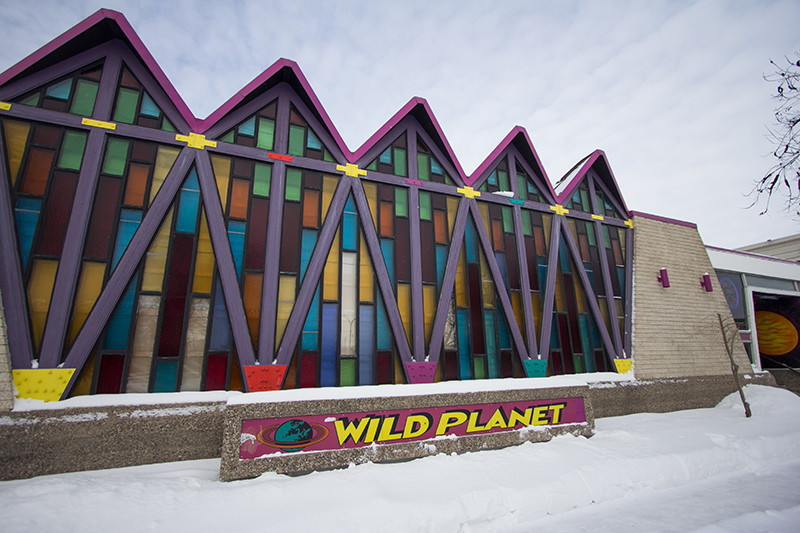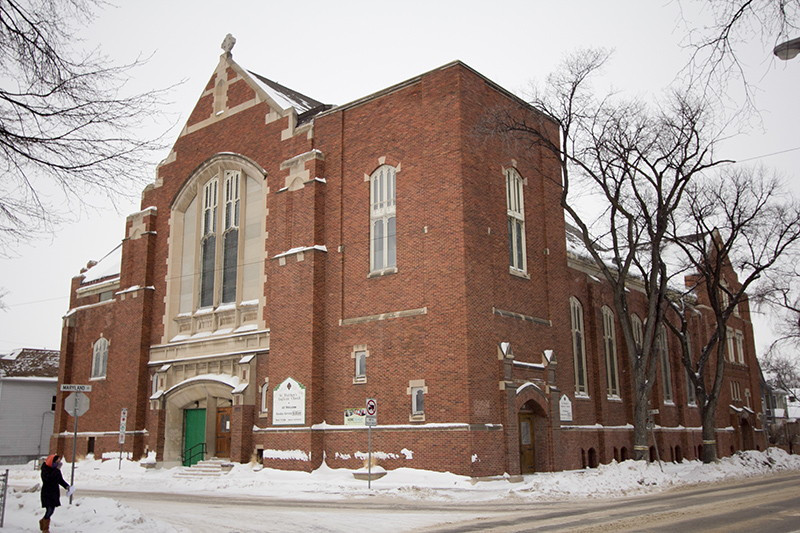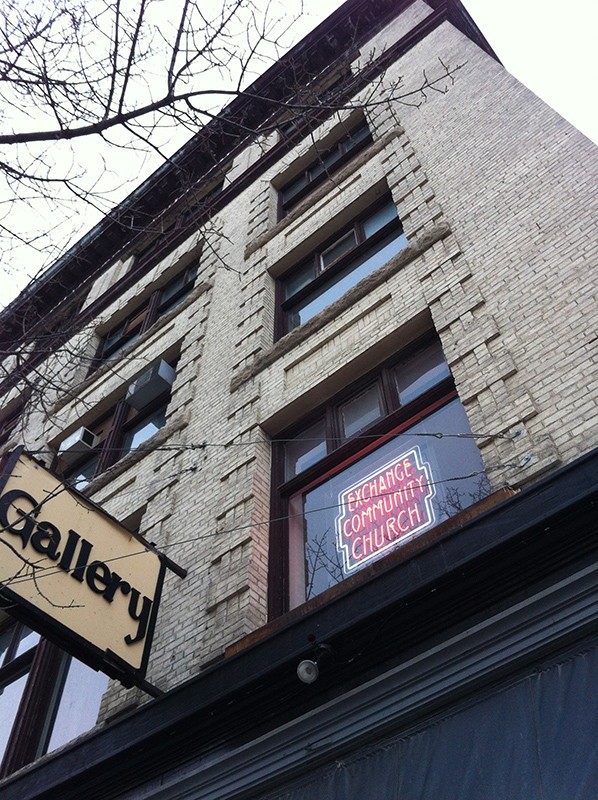Church conversions move forward in the core
Shifting landscape of organized religion reflected in re-appropriations of traditional structures
While St. Matthew’s Anglican Church might look like a bastion of unwavering tradition from its exterior, on the inside, it, like numerous other churches in Winnipeg, is undergoing a dramatic change.
The century-old building, which houses five small congregations at St. Matthews and Maryland, is in the process of converting the majority of its 12,500-square-foot space into 25 affordable rental housing units and a neighbourhood resource centre as part of its WestEnd Commons project.
Although the building will retain a dedicated worship space for its existing functions, renters will not be required to have any affiliation with the church when the redevelopment is completed early next year.
The conversion, the first project of a secular, non-profit housing initiative founded by two of the building’s congregations, reflects a key shift in the geography of organized religion in the city.
“It was either going to close or be renewed,” says Cathy Campbell, a priest in the building’s largest congregation of 75 members and vice-chair of its housing initiative.
Stopping at least once to cough on the airborne by-products of renovation, Campbell explains the building, originally designed to hold 1,200 people, suffered a decline in attendance in the years following the Second World War when many families migrated from the inner city to the suburbs.
While the space remains a hub of activity, the massive building fits a bit too loosely with its surroundings, Campbell says.
“We just knew we could be doing more with it to make a positive impact on the community.”
Of the many Winnipeg church conversions that have taken place in recent years - including St. Helen’s Anglican on Church Avenue (now condos), St. John’s Church on Main Street (also condos) and the First Scandinavian Mission Church on Logan Avenue (now office spaces) - the vast majority are located in less affluent neighbourhoods within or close to the core area.
“There are lots of other old churches (in the core area) that need to consider their futures,” says Campbell.
“Is what we’re doing here a model that will allow heritage buildings to be maintained? I really hope so.”
According to James Weisgerber, Archbishop of Winnipeg for the Roman Catholic Church, declining attendance rates don’t seem to be threatening any of the denomination’s local parishes, suburban or otherwise.
“Overall, our churches are full,” Weisgerber says, noting new immigrant communities in particular are filling inner-city pews like never before.
However, prospects are less certain in the next few decades.
“The greatest proportions (of church members) certainly are gray-haired and white-haired,” says Weisgerber, adding that, in some parishes, there is a noticeable lack of teens and young adults.
While the question as to how religious communities will be affected by the eventual passing of the baby boomer generation remains unanswered, local developers are already finding creative uses for the churches that do get left behind.
Roman Panchyshyn, who owns Osborne Village music apparel emporium Wild Planet, is one such re-appropriator.
Panchyshyn, who moved from his original location downtown to the former Church of Christ at Confusion Corner four years ago, is aware of the irony inherent to his use of the space.
“It’s still kind of a worship centre,” he laughs. “Just swap out Jesus for rock stars.”
As expected, eyebrows were raised at the purchase.
“We had some former patrons of the church saying it was inappropriate having the ultimate rock shop in its former space,” says Panchyshyn, who’s kept certain elements of the building’s church aesthetic, like its stained-glass windows, intact.
“But outside of that, there really wasn’t much of an issue.”
Other examples abound.
Everything from a licensed music venue (the West End Cultural Centre colourfully repurposed a former church building) to a retirement community (Cathedrale Manor in St. Boniface is a redeveloped convent) can be found among the city’s previous conversion efforts.
Studio 511, a 46-unit condominium complex currently under construction in Osborne Village, takes advantage of the former First Church of Christ Scientist Church at 511 River Ave., built in 1910.
More than half of the now four-story structure’s suites (all floors had to be added by the project’s developer) have already been sold.
According to Herb Enns, a professor of architecture at the University of Manitoba, church conversions tend to present unique design challenges to those who take them on.
“Often these renovations are kind of ‘cover-up,’” says Enns. “The last thing you want (living or working in a former religious structure) is to have this constant sense that you’re living in a church if you’re someone who’s not affiliated with it.”
Then again, the uniqueness of dwelling in a former church as opposed to a more conventional space might be illusory.
“Very few of us live in spaces constituted directly with us in mind,” says Enns. “You’re constantly shaped by the ambitions, dreams and skills of others.”
Winnipeg’s apparent church conversion trend, however, is anything but a one-way street.
With its neon window sign looking out onto the corner of Albert Street and McDermot Avenue, the Exchange Community Church, which owns and gathers in a five-story former commercial building it also rents to artists and retailers, fits seamlessly into the urban landscape.
It’s this type of community integration parish pastor Doug Wiebe says is fundamental to the church’s vision.
“We love the artists. We regard artists as the prophets of culture,” he says. “They tell us what’s going on in the world today.”
As such, the loft studios are available to artists of all types and beliefs at an affordable rate, and their work is featured during the first half of each Sunday service regardless of political, social or religious agenda.
The church’s approach to community engagement, which forgoes active attempts to gain converts in favor of a passive community hub role, seems to embody a distinctly 21st-century approach to organized religion.
“Our vision is simply to serve the community,” says Wiebe. “And an important part of that is actually being a part of it.”
Published in Volume 67, Number 17 of The Uniter (January 23, 2013)









